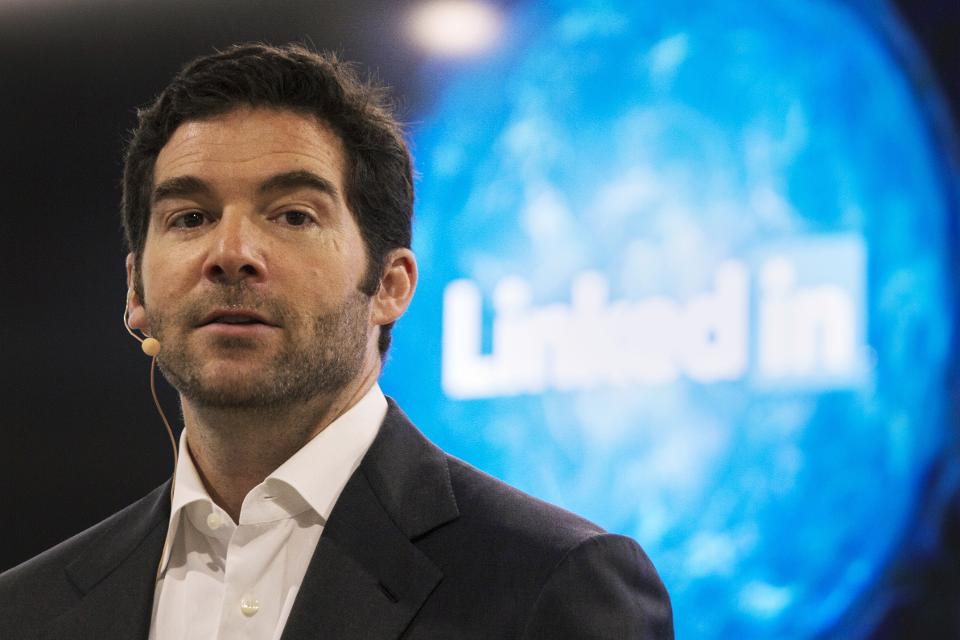Jeff Weiner, CEO of LinkedIn, has gradually metered out the distribution of the company’s live video … [+]
The meticulous rollout of LinkedIn Live has stretched into 2020, but with the news that the service is becoming available to pages, nonprofits can prepare to enter the fray.
At its core, LinkedIn Live is not much different than live-streaming elements of other major social media networks like Facebook, Twitter and YouTube.
Thus, many of the principles of a strong live-streaming strategy remain the same. On its website, LinkedIn recommends that broadcasters be prepared, authentic, consistent, flexible and — the company’s top tip — engaged. As I’ve written, engagement is crucial but challenging to build, but authenticity, preparedness, consistency and flexibility are that every live-streamer can launch with on day 1 — and engagement will follow. (Not to mention that real-time engagement on LinkedIn Live offers additional challenges of its own: a much longer delay than other platforms; and the inability to monitor comments anywhere but on the post itself — two things that LinkedIn’s developers are sure to address as the beta phase ends.)
One major difference between Facebook Live and LinkedIn Live is the requirement to broadcast through a third-party application — a step that may scare off many nonprofits. According to live video specialist Ian Anderson Gray, users now have six options through which they can live-stream to LinkedIn: StreamYard (Gray’s preference); Switcher Studio (my preference); Telestream; Socialive; Restream; and Wowza.
While a cursory level of proficiency will be required to get your first LinkedIn Live off the ground, many nonprofits also wonder what they should talk about on a live video.
I wrote in 2017 about seven ways that nonprofits can leverage Facebook Live, but on LinkedIn, straightforward news updates will make a great starting point.
Nonprofits that create an email newsletter on a consistent basis already have an ideal base of content around which to build a live stream strategy. By imagining your email blast as a rough outline of what to speak about during your live video, you’ll be able to tell your nonprofit’s story in a whole new way. This approach also does not depend on engagement to succeed, although it will be beneficial for you to encourage as much engagement as possible to expand your video’s reach.
LinkedIn Live’s “Best Practices Guide” includes a lot of information about analyzing your audience after your broadcast. Data analysis is always crucial, but drawing conclusions about your audience metrics after your first broadcast is like stepping on the scale after coming home from signing up for the gym: sure, you can do it, but you’re not going to learn much.
Although the “Best in Class” section of LinkedIn’s guide doesn’t yet include nonprofits, there is plenty of space for the sector to grow using live video. Facebook has materials built dedicated to using video for social good, and continues to innovate by adding functions like a “Donate” button to its broadcasts; YouTube offers similar tools.
Inevitably, success through live video comes with practice, and those brands that are seeing success across platforms in 2020 are the same ones who haven’t been afraid to fail to this point. If you’ve experimented sufficiently with Facebook Live to date, LinkedIn Live might represent an intriguing option in 2020 — but even if your nonprofit doesn’t feel prepared to begin streaming yet, you can apply for LinkedInLive beta access here.
Disclosure: Chris was selected as an unpaid LinkedIn Live beta tester in February 2019.
